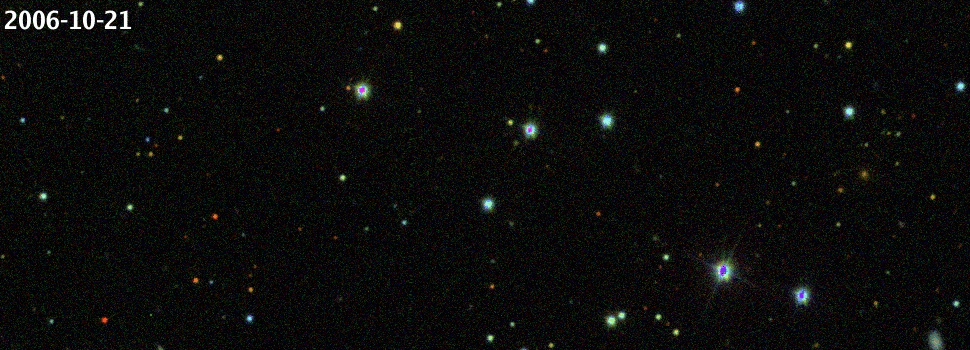They were not even looking for asteroids or comets but supernova. The SDSS was scanning the same area of the sky every clear night looking for supernova. When you get this type of data, you can also find moving objects, but it takes a different computer program to find them. So they wrote the program and you can see the discovery images in the animation below.
 Doesn't exactly jump out at you, does it? This guy is probably less than 30-60 miles across and has a composition similar to a comet. Unlike comets, it never gets close enough to the Sun to form a tail.
Doesn't exactly jump out at you, does it? This guy is probably less than 30-60 miles across and has a composition similar to a comet. Unlike comets, it never gets close enough to the Sun to form a tail. The significance of this discovery is that it is an object that appears to have originated between the Kuiper belt (a collection of icy bodies between Neptune and about 5 billion miles from the Sun) and the Oort Cloud (which should lie about a trillion miles from the Sun). Astronomers have dubbed this area the Inner Oort cloud (not exactly a creative name) and its existence is still controversial. However, a previously discovered body named Sedna (it was big enough to get a name) and now this guy are starting to provide a little more evidence for the Inner Oort Cloud model of the solar system.
This discovery is a nice example of science in action. Observations are made, predictions are made and tested by more observations and experiments. Ideas are revised based on new observations. I am looking forward to more discoveries as we try to piece together the mysteries of the outer solar system.





2 comments:
They are calling that a planet? Pluto must be ticked...
Minor planet...VERY minor planet :)
Post a Comment